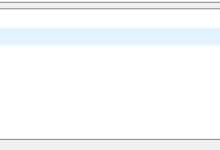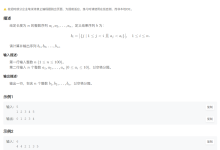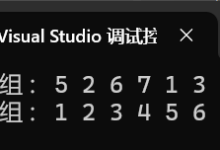使用 Java 将 byte[] 转换为 File 对象并上传到外部服务器
- 一、前言
-
- 1. 问题背景
- 2. 环境准备
- 3. 实现步骤
-
- 3.1 从 URL 获取图片字节数据
- 3.2 将字节数组转换为文件
- 3.3 调用外部 API 上传文件
- 3.4 完整实现
- 4. 总结
一、前言
在 Java 中,处理文件上传和下载是常见的任务,尤其是在与外部系统交互时。例如,你可能会需要从一个 URL 获取字节流数据(如图片、文档等),然后将这些字节数据转换为文件并上传到其他系统。本文将通过一个简单的例子演示如何使用 byte[] 转换为 File 对象,并将其上传到外部服务器。
1. 问题背景
假设我们有一个 URL,它提供了一些图像数据(以字节数组的形式)。我们需要做以下几件事情:
我们将使用 Spring 框架的 RestTemplate 来获取字节数据,并使用 Java 的 I/O API 来处理文件操作。
2. 环境准备
在实现之前,你需要确保以下依赖已包含在项目中。以 Maven 为例,相关的依赖配置如下:
<dependencies>
<!– Spring Web 依赖,用于处理 HTTP 请求 –>
<dependency>
<groupId>org.springframework.boot</groupId>
<artifactId>spring-boot-starter-web</artifactId>
</dependency>
<!– Spring Boot RestTemplate 依赖 –>
<dependency>
<groupId>org.springframework.boot</groupId>
<artifactId>spring-boot-starter-web</artifactId>
</dependency>
</dependencies>
3. 实现步骤
3.1 从 URL 获取图片字节数据
首先,我们需要使用 RestTemplate 从远程服务器获取图像数据。这里的 RestTemplate 是 Spring 提供的一个 HTTP 客户端,可以方便地发送 GET 请求并获取响应数据。
import org.springframework.web.client.RestTemplate;
import org.springframework.http.ResponseEntity;
public byte[] getImageBytes(String imageUrl) {
RestTemplate restTemplate = new RestTemplate();
return restTemplate.getForObject(imageUrl, byte[].class);
}
- getForObject 方法会将指定 URL 的响应体转换成字节数组。
- 如果 URL 指向的资源存在,这个方法将返回包含图像数据的字节数组。
3.2 将字节数组转换为文件
接下来,我们将获取的字节数组保存为一个临时文件。可以通过 FileOutputStream 将字节数组写入到文件系统中。
import java.io.File;
import java.io.FileOutputStream;
import java.io.IOException;
public File createTempFileFromBytes(byte[] imageBytes, String fileName) throws IOException {
// 创建临时文件,确保文件名具有唯一性
File tempFile = File.createTempFile(fileName, ".jpg");
// 将字节数据写入文件
try (FileOutputStream fos = new FileOutputStream(tempFile)) {
fos.write(imageBytes);
}
return tempFile;
}
- File.createTempFile() 用于创建一个带有唯一名称的临时文件。
- 使用 FileOutputStream 将字节数组写入该临时文件。
3.3 调用外部 API 上传文件
上传文件到外部服务器通常是一个常见的操作,我们可以将文件作为 multipart/form-data 格式发送。通过 RestTemplate 的 postForObject 或 postForEntity 方法,我们可以向服务器发送文件。
以下是一个使用 RestTemplate 调用外部 API 上传文件的示例:
import org.springframework.http.MediaType;
import org.springframework.http.HttpEntity;
import org.springframework.web.client.RestTemplate;
import org.springframework.http.ResponseEntity;
import org.springframework.web.client.RestClientException;
import java.util.HashMap;
import java.util.Map;
public String uploadFile(File file, String uploadUrl) {
RestTemplate restTemplate = new RestTemplate();
// 设置文件上传请求的头信息和参数
Map<String, Object> fileMap = new HashMap<>();
fileMap.put("file", file);
HttpEntity<Map<String, Object>> requestEntity = new HttpEntity<>(fileMap);
try {
// 发送请求,获取响应
ResponseEntity<String> responseEntity = restTemplate.postForEntity(uploadUrl, requestEntity, String.class);
return responseEntity.getBody(); // 返回上传结果
} catch (RestClientException e) {
e.printStackTrace();
return "File upload failed";
}
}
- RestTemplate.postForEntity() 用于向外部 API 发送请求并获取响应。
- 你需要根据目标 API 的要求,将请求体(文件和其他参数)构建为合适的格式。
3.4 完整实现
结合上述所有部分,最终的实现会如下所示:
import org.springframework.web.bind.annotation.*;
import org.springframework.http.ResponseEntity;
import org.springframework.http.io.InputStreamResource;
import org.springframework.beans.factory.annotation.Autowired;
import java.io.File;
import java.io.FileOutputStream;
import java.io.IOException;
import java.util.HashMap;
import java.util.Map;
@RestController
public class FileController {
@Autowired
private RestTemplate restTemplate;
private String imageUrl = "http://example.com/api/file/getFileInputStreamById/";
@PostMapping("/syncUser")
public ResponseEntity<InputStreamResource> syncUser(@RequestParam("photoId") String photoId) {
// 从 URL 获取图片字节数据
byte[] imageBytes = restTemplate.getForObject(imageUrl + photoId, byte[].class);
// 将字节数组转换为文件
File photoFile;
try {
photoFile = createTempFileFromBytes(imageBytes, "photo_" + photoId);
} catch (IOException e) {
e.printStackTrace();
return ResponseEntity.status(500).build();
}
// 上传文件到目标服务器
String fileUrl = uploadFile(photoFile, "http://example.com/upload");
// 返回文件 URL(假设文件上传成功)
return ResponseEntity.ok();
}
private File createTempFileFromBytes(byte[] imageBytes, String fileName) throws IOException {
File tempFile = File.createTempFile(fileName, ".jpg");
try (FileOutputStream fos = new FileOutputStream(tempFile)) {
fos.write(imageBytes);
}
return tempFile;
}
private String uploadFile(File file, String uploadUrl) {
RestTemplate restTemplate = new RestTemplate();
Map<String, Object> fileMap = new HashMap<>();
fileMap.put("file", file);
HttpEntity<Map<String, Object>> requestEntity = new HttpEntity<>(fileMap);
ResponseEntity<String> responseEntity = restTemplate.postForEntity(uploadUrl, requestEntity, String.class);
return responseEntity.getBody();
}
}
4. 总结
本文展示了如何通过 Java 和 Spring 来处理图像文件的获取、保存和上传。通过 RestTemplate 获取字节数组并将其转换为 File 对象,可以轻松实现从远程 URL 获取文件并将其上传到外部服务器。这种方法适用于处理文件上传、下载和与外部系统的集成。
在实际应用中,你可能需要根据外部 API 的要求调整上传的文件格式或请求头信息。你还可以通过优化错误处理来确保程序的稳定性和健壮性。
希望这篇文章对你在 Java 中处理文件上传和下载有所帮助!
 网硕互联帮助中心
网硕互联帮助中心






评论前必须登录!
注册